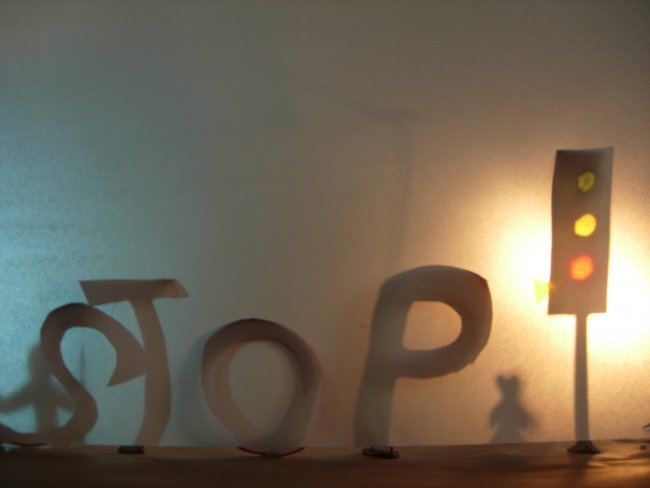The School Year 2009/10 at IMMA: As a result of working in the Education & Community Department at IMMA (Irish Museum of Modern Art) the programmes I coordinate tend to follow the annual academic cycle rather than the calendar year. So as June approaches, and the school year 2009/10 draws to a close, I’m beginning to look back over the past ten months of work. As we’re all too aware the last ten months in Ireland have been very difficult. Few reading this will have remained immune to the effects of the present economic situation. No less than any other sector of our culture, arts professionals and arts organisations are struggling to survive in this extraordinarily difficult economic situation. If they are not directly affected by funding cuts, arts workers and companies are definitely subject to the knock on effects from the financial hardship being experienced in the rest of society.
In spite of this overall context, I think that there have been some positive developments over the past ten months within Children’s Programmes at IMMA. This year, if there has been one major current running through my programming it has been towards encouraging independence for children, parents and primary teachers in how they can choose to engage with IMMA.
Looking and Responding at IMMA
There is already a range of learning supports through which children can access contemporary artworks at IMMA.
• There are free guided tours during weekdays.
• There is also the annual Primary School Programme which focuses on selected artworks and themes. This programme includes, along with the gallery tour, a practical workshop element.
• IMMA continues to run its Explorer programme for families for two hours on Sundays. This drop-in workshop is usually based in the galleries. Explorer encourages participating children and their families to respond to their experience of a selected exhibition by using dry art materials.
Essentially these programmes are intended to create some type of structured or mediated opportunities for children to look at and respond to art. These opportunities should enable children:
• to use their personal experiences as a starting point in exploring art;
• to use dialogue and debate (particularly with older children) to develop ideas, knowledge and understanding;
• and to enable children to build-up a selection of critical and analytical thinking skills in response to artistic and aesthetic experiences.
I think it’s these experiences and thinking skills which will encourage children to develop a life-long pattern of visiting IMMA and other museums and galleries. But it’s also important that later visits do not become dependent on or expectant of high levels of support structures like workshops, interpretive aids, guides etc. While a choice of appropriate learning resources should be available to people of all ages, in a gallery context care needs to be taken that supports don’t replace the individual’s direct experience of and response to actual artworks.
And this direct experience is the focus of the long view: children, who are now visiting IMMA with their families or schools, will hopefully return with increasing independence as they mature. In this way IMMA, and particularly its permanent collection, can become part of a person’s life-long aesthetic experience, from childhood, through youth, and into adulthood. Hopefully IMMA can provide a cultural source to which people can repeatedly and independently return throughout the changes and developments of their lives.

Primary Teachers and IMMA
The past ten months has also delivered improved services for primary teachers. Again the aim is to encourage independence in how primary teachers choose to engage with the contemporary art at IMMA. At the start of the current school year, IMMA introduced a new on-line booking system for guided tours and the Primary School Programme. Of course on-line booking systems are a norm now for many arts organisations. But it was important for IMMA to provide a readily accessible tool to primary teachers through which they can see tour availability and make choices about how and when to visit IMMA. The advantage of on-line booking is that it increases the time in which teachers can make bookings (outside classroom or office hours); it lessens the degree to which they have to depend on making direct contact with administrators (such as myself!); and it stops time being wasted on phoning administrators or posting application forms for programmes that may already be fully booked.
The IMMA website also allows teachers participating in the IMMA Primary school Programme to access relevant exhibition notes on-line. Obviously the web offers a huge range of other possibilities through which to provide learning supports for visiting teachers and children. IMMA is beginning to take advantage of these opportunities.
IMMA continues to provide opportunities to primary teachers for in-career development. This academic year has seen the second series of Saturday workshops for primary teachers called the Curriculum & Contemporary Art. The aim of this series is to increase primary teacher’s personal experience of contemporary artworks and build on their confidence to engage with contemporary practices. I have written a more extensive review of the Curriculum & Contemporary Art elsewhere in Practice.ie.
New IMMA Publications for Children
During this academic year IMMA has launched or developed some publication projects which will hopefully support families and class groups in engaging with artworks from the IMMA Collection.
Since August 2009 IMMA has published a seasonal trail designed for visiting families. Each IMMA Trail (so far August, Winter and Spring) contains a map of the West Wing galleries and a map of the grounds of IMMA. The maps show the locations of about 12 artworks from the IMMA Collection. The text about each work can be read to, by, or with children. It’s intended that teachers or parents can use the trail to bring children around IMMA without necessarily having to take part in a structured programme or a mediated tour. The trails are free and available at points around IMMA.
Into 2010/11
Later this year, it’s planned to switch from publishing these seasonal trails to producing a trio of themed trails which group outdoor collection artworks according to the materials with which they have been made: 1. Bronze; 2. Steel; 3. Stone, Wood & Plants.
Finally, IMMA is almost ready to launch its new series of children’s publications called Our Collection. Based on artworks from the IMMA Collection, Our Collection is presented in four separately themed packs.
Each pack contains 12 images, along with relevant information and illustrations about the respective images and artists. Each pack has a separate theme that connects the images contained within.
• People & Portraits
• Nature & The World Around Us
• Stories & Memories
• Journeys & Maps
Again, as with the IMMA Trail, it is intended that the text in each pack can be read to, by, or with children. The text aims to enable children to develop ways of looking at and thinking about modern and contemporary art. This series is accompanied by a booklet for primary school teachers which offers a rationale for engaging children with contemporary art and shows some ways in which a visit to IMMA can support teachers in their classroom work.
Because of the temporary nature of exhibitions and loans from the IMMA Collection, the series Our Collection is intended to enable teachers and children to have more ready and independent access to the images from the Collection, particularly when those images are not available in the IMMA galleries or are separated from an Irish audience by geographic distance.
It is important, of course, to note that nothing can replace the first-hand encounter of an art experience; regardless of the artwork being a painting, a sculpture, a performance or an installation. However it is intended that this series of publications will give children an idea of the breadth of modern and contemporary art practices and concepts. It is also hoped that the images in Our Collection will encourage children, families and teachers to visit IMMA or other venues to experience the actual artworks.



No comments added